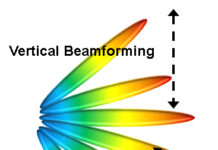
The interest around topics such as Artificial Intelligence, Industry 4.0, IoT (Internet of Things) has grown in recent years, and we are bombed with news about it every day. All of this requires an infrastructure capable of transmitting mountains of data quickly and securely: the new 5G network is able to provide the necessary support.
Even before its implementation, 5G had a great echo, and debates started on many levels, from the purely technical to the geopolitical one. Expressing a judgment inevitably involves choosing a point of view. Deciding on the risk/benefit ratio means taking into consideration all the repercussions that 5G will have on everyone’s life and on communities, at all levels; understand how it can improve the quality of life and how it can worsen it (impact on health and the environment? Sensitive data at risk?…).
We can begin to take a look at the promises in the various fields of human activity.
Health & Safety.
In several hospitals we have already been able to appreciate the advantages of remote monitoring of hospitalized patients; the new network will connect departments, hospitals, decentralized structures at various levels, and experiences such as remote surgery will no longer be the seductive images of commercials, but everyday life. Healthcare services will be able to monitor patients remotely and provide adequate services.
The first aid network can be managed much more efficiently, and so will the coordination of other actors involved: law enforcement, firefighters, etc. Thanks to the infrastructures, built at various levels, the problem of isolating areas affected by natural events such as earthquakes will no longer exist.
Cars will be connected in such a way that there will be communication between vehicle and vehicle, and intelligent transport will be ensured not only by people’s common sense but by a hub that will optimize flows.
Energy efficiency.
It will be ensured in buildings thanks to various monitoring devices that will optimize energy supply. Even suppliers will be able to control all phases of the service provided, from the mapping of needs updated in real time, to the power supplied, to fault management. Naturally, users of the services will also be able to optimize consumption by monitoring appliances, lighting, etc.
Industrial, agricultural and livestock production.
The fourth industrial revolution (Industry 4.0) will lead to fully integrated and interconnected production; the impact will be profound on all four lines: use of data (big data, IoT, Cloud Computing,…), analytics (use of the amount of data collected, currently limited to 1%, for the improvement of production), interaction between man and machine (touch interfaces, augmented reality,…) and the transition from digital to reality (additive manufacturing, 3D printing, robotics,…).
Even in the field of agriculture, connections between sensors that monitor environmental parameters (humidity, temperature, wind, soil quality, …) and actuators that intervene to correct them will allow the automation of most of the interventions on the crops. As far as zootechnics is concerned, farmers will be able to take advantage of monitoring the stables (environmental parameters, food and water levels, …) and the movements of the livestock.
The list of benefits described above is extensive but not exhaustive; others are already on the way today, but will not be described here for the sake of brevity. Above all we must take into account all those functions, unpredictable now, that such a powerful interconnection system will make possible, which we will realize along the way.
Certainly the timeline will not be short, we can reasonably speak of 5 years, starting from 2019, to implement the network. Possible competitors are also to be taken into account: the 802.11ax WiFi technology, which works on frequencies comparable to those of 5G, will certainly be the main one. However, we must not forget another one: the resistance to the diffusion of installations on the territory, which has already taken on significant tones today, mainly linked to the environmental and heatlth impact; it is desirable that the debate on these aspects take place on a purely technical level, with scientific evidence in hand, and not on a political-party one, with partisan interests in hand.
(revised from a contribution by Lorenzo Bianchi published on physics4medicine.com)






